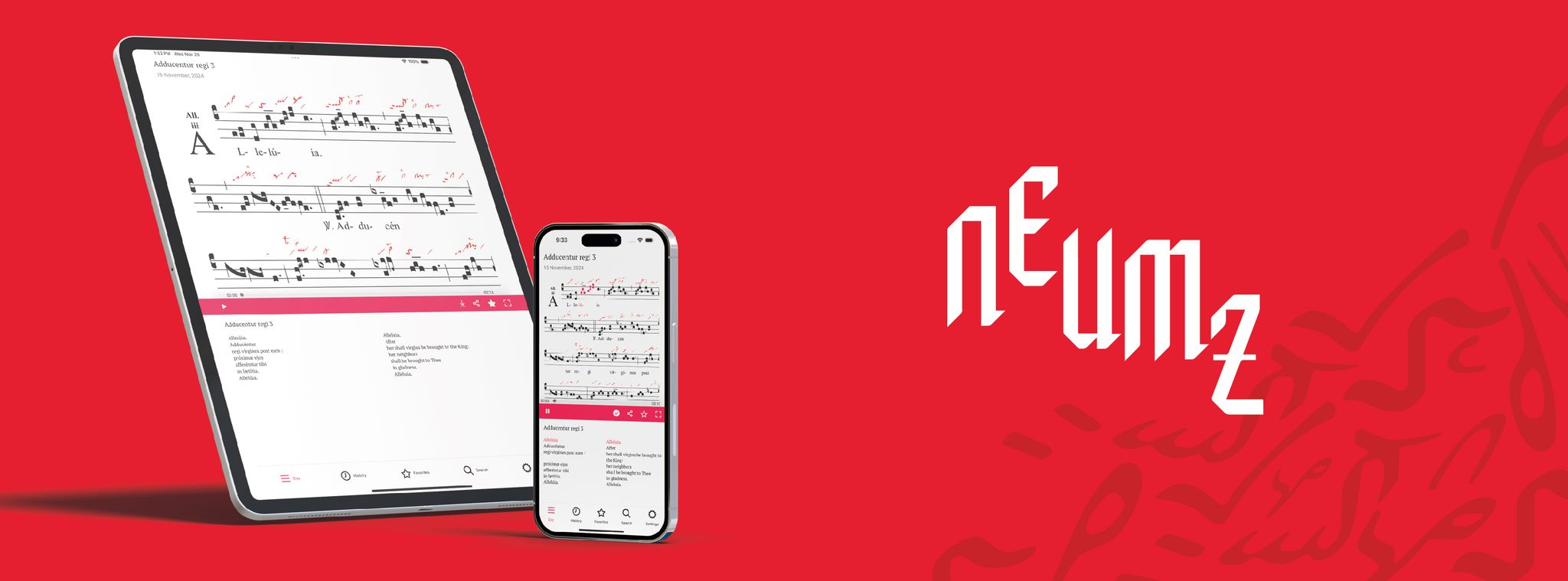Te Decet Hymnus Deus 7
Tomorrow we celebrate the 15th Sunday in Ordinary Time. The chant chosen by Neumz to celebrate this day is the Alleluia Te decet hymnus. The text, taken from Psalm 64, verse 2, is a praise and an offering of gratitude expressed through a chant rich in nuance and intimate at the same time: it is a real jewel of the repertoire. On the one hand, there is the total melodic unity that constitutes the Alleluia with the verse, not always sought or achieved in other alleluias. On the other hand, the construction in a transposed mode 7 with the key of C in the second line allows the construction of melodic scales with a very curious Eastern flavour thanks to the abundance and prominence of the semitones, where the most valuable moments of this invitation to praise are to be found.
The verse, on the other hand, does nothing but unfold all the potential of the jubilus: what in the jubilus is a single formula, which is not repeated (we are referring to its melodic summit, the D-F-F motif), is then repeated successively in the verse, as if it were the theme of a symphony, developing all the potentiality enclosed in this original motif and giving a sense of unity to the piece, to this invitation to praise.
This Alleluia begins with a melodic ascent which is where the full acclamation is: Alleluia. Its expression, with a great abundance of semitones, creates the climate of the whole melody, including the verse. It is inviting, but restrained in its expression. There is a rapid melodic ascent from the fundamental, G, to the dominant D, but in that movement, the B lends a hint of restraint to what could have been a jubilant leap of praise. In addition, the initial intonation ends with a very sensitive and delicate B cadenza, typical of this Alleluia chant.
And what follows is the ascent to the accent, where the climax of the piece is the ascending movement, which is again of a tone and a half. Thanks to these tone-and-a-half constructions, the Alleluia acclamation maintains its restrained character, without stridency. The praise of this Alleluiatic chant does not lie in this. After the summit of the jubilus, it descends to the lowest register of the piece, to the fundamental G, from which the intonation of this chant was born. After this, the melody begins its final cadence with two descents to the fundamental, both prepared with D-C ornaments, which gives the final descent its greater sonority, but also serenity, as the cadence on the final G is gradual and developed with a wealth of neumas that slow down the melody, until it settles gently on the cadence.
As for the verse, it performs the same musical development as the jubilus, however, it does so in its own way. Indeed, this time the melodic ascent towards the musical accent extends over several words, in which the melodic ascent D-F is repeated.
At the beginning there is a repetition of the restrained call to praise, Te decet hymnus Deus. This is the general spirit of this verse and an incitement to quiet and restrained praise. And this is clearly manifested in the intermediate cadence of the word Deus which rests in a delicate semitone, in the B, as in the jubilus.
From then on, the melody repeats up to ten times the formula of the summit that appears in the jubilus (D-F), sometimes with tristrophae and sometimes with distrophae. The first and last of these ascents to the summit D-F occurs in the words Sion and Jerusalem, in which the jubilus of the piece is taken up again. This invitation to praise belongs to God in the places He Himself has chosen: the Holy City, the figure of the Church.
In the middle of these two melodic ascents that repeat seven times the ascending movement towards the F, there are now three more in tibi reddetur votum: Tibi, blunting in the treble, ends with the same delicate nuance as Deus, a fourth above, E sharp; reddetur has the fervour of promise and gratitude at the same time, in the distropha, the repercussion and the semitonal cadence with the clivis with episema; votum, like Sion and Jerusalem, unfolds its broad contemplative melodic development in a rhythm of admirable order in which joy and love mingle in simple motifs through which the desire for the Holy City passes ... and for Heaven where all will be praise and gratitude.
